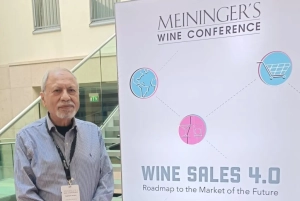Report by Geisenheim to find Solution out of the Current Crisis
The Report identifies the key challenges facing the industry during the current economic crisis being faced by the global wine industry and tosses up possible solutions that may lead it out of the current crisis. The methodology it follows is the unique ‘Market Barometer’ of Prowein which has been focusing on the state of the international wine industry by seeking answers to key sectoral questions by the global experts since 2017.
“Rising costs with falling demand currently present the wine industry with major economic challenges, aggravated still further by the long-term trend towards a healthy lifestyle and altered consumer preferences,” says Prof. Simone Loose, Head of the Institute for Wine and Beverage Business at Geisenheim University, underlining an essential result of the global industry barometer.
Industry experts agree that:
* The mood in the industry is dominated by economic challenges.
* Heavily rising costs and stark drops in purchasing power in private households are negatively impacting the profitability of the industry.
* Companies are reacting proactively with measures to cut costs and boost sales.
* For 2024 the wine industry expects only moderate cost increases and has a cautiously positive outlook for the future.
Current challenges for the wine industry
The number of economic challenges has increased against the previous year although the risk of further cost increases has slightly diminished as a result of declining inflation.
The global economic climate continues to be assessed as fragile. Concerns regarding falling wine consumption and the low profitability of the wine industry have increased significantly.
The supply chains disrupted by the pandemic could largely be restored and no longer constitute a major challenge in the industry’s view.
Potential health policy restrictions imposed on the marketing of alcoholic beverages are not perceived as a threat by the industry as yet.
Industry’s response to economic challenges
The industry has responded to these challenges with numerous measures with an overwhelming majority trying to partially compensate for the cost increases by increasing selling prices. This also led to drops in sales due to competition and price sensitivity of the consumer.
Trend in sales, costs and profit
High cost rises negatively impacted profitability of most wine producing companies and wine merchants. Only about half the companies managed to keep sales at the previous year’s levels. Only a fourth of traders succeeded in increasing their sales, while only 16% of producers managed to achieve an increase.
Further cost increases to be modest
For 2024 most companies expect costs to rise further. But two-thirds expect the increase to be moderate, though about 15% expect strong cost increases in the near future, possibly because of State measures such as the increase to the minimum wages and higher VAT rates in Germany.
Slightly positive outlook for 2024
The long-term economic barometer of the Business Report reflects the difficult economic trend in 2023 but a slight positive hope for 2024 since the previous survey in 2022 had already expressed declining expectations for 2023, which has already materialized-except the hospitality segment which has benefited from the unusual post-pandemic travel boom and reported an upswing in 2023 as compared with 2022.
The industry’s economic expectations for 2024 have improved for all segments of the wine industry. Though the wine sector will still have to operate in a difficult economic environment. Restoring profitability will continue to prove a major challenge for many companies.
Other parts of the Report refer to the following segments that have been dealt in detail as outlined Shift of market segments:
* Trade reports a strong shift towards popular segments.
* Premium wines and the medium segments have lost ground.
* For 2024 and 2025 trade expects an even more pronounced continuation of this trend.
* Producers expect a polarization for the future, with gains in the basic/popular and premium segments.
Reasons for falling wine consumption
* Lower disposable income
* Health and wellness trends generally reduce the consumption of alcoholic beverages
* Some countries see preferences shift from wine to other alcoholic beverages.
Achieving a new market balance
* The wine market is imbalanced due to an excess supply
* Producers feel that this excess supply must be reduced
* Many producers consider government support necessary
* Some are optimistic by better reaching out to young consumers
Other alcoholic beverages reach young consumers better
Future marketing of wine
- In competing with other alcoholic beverages wine has to better target young consumers.
- The majority of industry experts agree that wine needs to become more easily understandable for new target groups.
- A smaller section of the industry hopes for higher sales by marketing wine as an exclusive premium product.
- Wine must become more profitable to keep pace with other beverages in terms of marketing expenditure.
Producers expect a polarisation of wine sales with generally low growth in both the popular and premium segments. For the medium segment, however, producers expect a slight decline. The expectations for the future vary widely among producer countries.
Reduced income and health trends are main drivers
Consumers’ reduced disposable income is mentioned by the industry as the main reason for falling wine consumption. For the trade (70%), which is in direct contact with consumers, this is less true than for producers (83%). The second strong driver for foregoing wine and alcoholic beverages is the raised health and wellness awareness which is additionally heightened by political debate. The third reason stated is a shift in consumer preferences – moving away from wine to other alcoholic beverages.
Imbalance of the global wine market
The global decline in wine consumption paired with almost unchanged wine production levels has resulted in an excess wine supply. Three quarters of producers see a clear imbalance on the global wine market. The results are falling international grape and bulk wine prices, whereas costs are rising at the same time.
Most producers do not consider offering lower-priced entry-level wines by reducing production costs and increasing advertising expenditure to be effective. There are differences in this assessment both along the value chain and between the individual production countries.
Future marketing of wine
- In competing with other alcoholic beverages wine has to better target young consumers.
- The majority of industry experts agree that wine needs to become more easily understandable for new target groups.
- A smaller section of the industry hopes for higher sales by marketing wine as an exclusive premium product.
- Wine must become more profitable to keep pace with other beverages in terms of marketing expenditure.
Other alcoholic beverages reach young consumers better. The industry views targeting young consumers better as a key element in the strategy to reach attention.
Alternative packaging
Alternative packaging such as cans, pouches or PET bottles also hold the potential of appealing to younger consumers. The claim of making wine communication easier to understand also impacts wine-growing policies and wine law, which continue to be dominated by geographical demarcations.
Few see opportunities for an exclusive premium strategy
Wine is a highly differentiated product that has to appeal to consumers with different needs in various market segments. One approach especially suited to the high-end price segment is marketing wine as an exclusive premium product. However, only 33% of trade and 39% of producers overall see high prospects of success for a premium strategy. These values highlight that the premium segment is important but limited.
Effective marketing requires investment by a profitable industry
Every marketing strategy, be it addressing new target groups or exclusive premium marketing, requires long-term investment. The majority of producers and a large share of the trade feel that other beverages can afford more comprehensive marketing communication. Other beverages are ahead of the wine sector, especially when it comes to the analysis and strategic use of data and digital communication.
The industry’s future viability depends on a marketing strategy
This closes the circle between the necessary professionalization and market adjustment of the wine industry and the investment in communication to ensure its continued existence in the future. The industry has to find a new balance with supply and professional structures to meet demand in the long term. Current excess supply, fragmented, in part insufficiently professional structures and ruinous prices prevent the industry from holding its own in the communication competition for tomorrow’s consumers.
Prowein had commissioned the Institute for Wine and Beverage Business at Geisenheim University under the direction of Prof. Dr. Simone Loose for this exhaustive Study. Geisenheim is known worldwide for its research and teaching in the field of wine science. The details of the Report may be accessed at The ProWein Report
Subhash Arora




